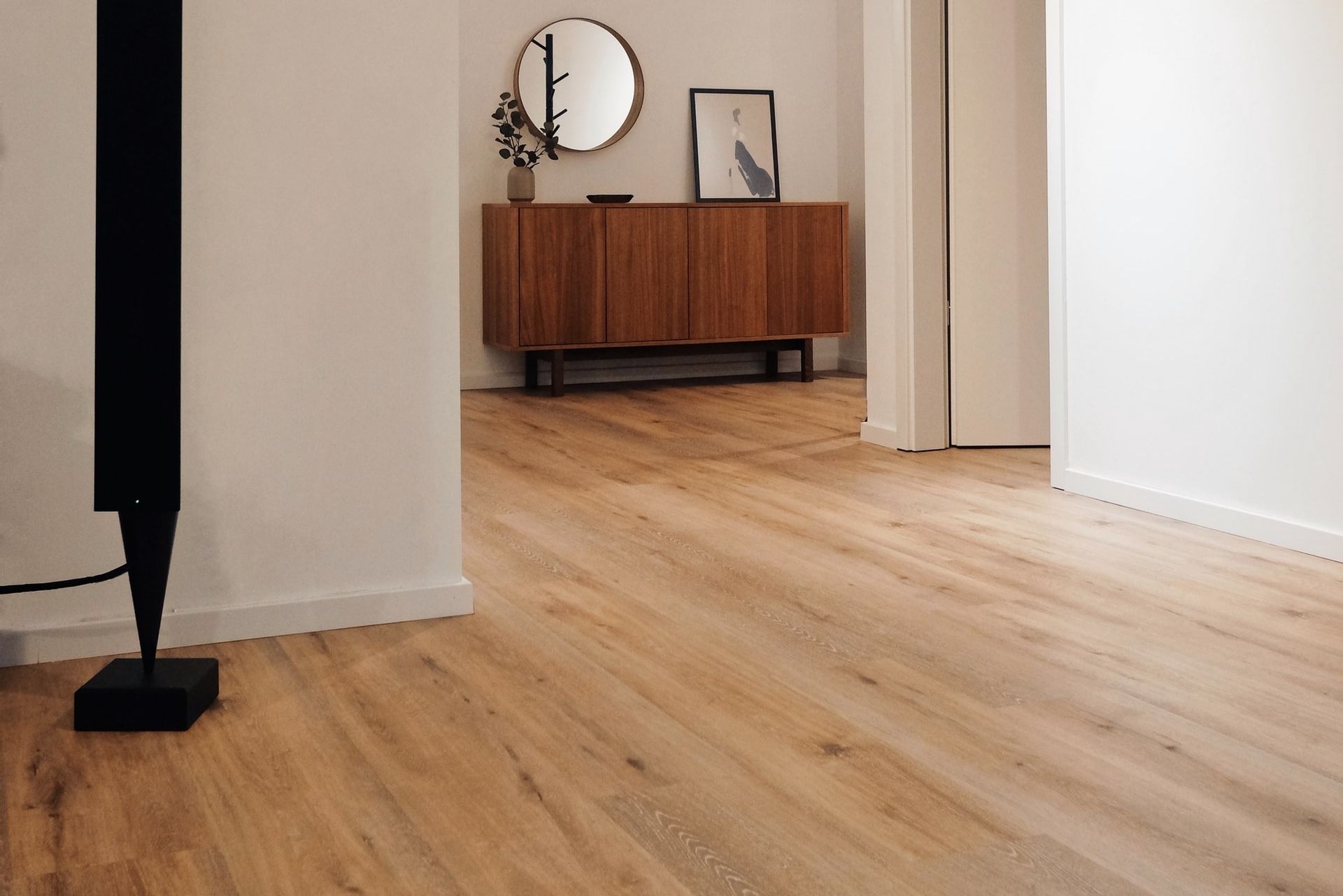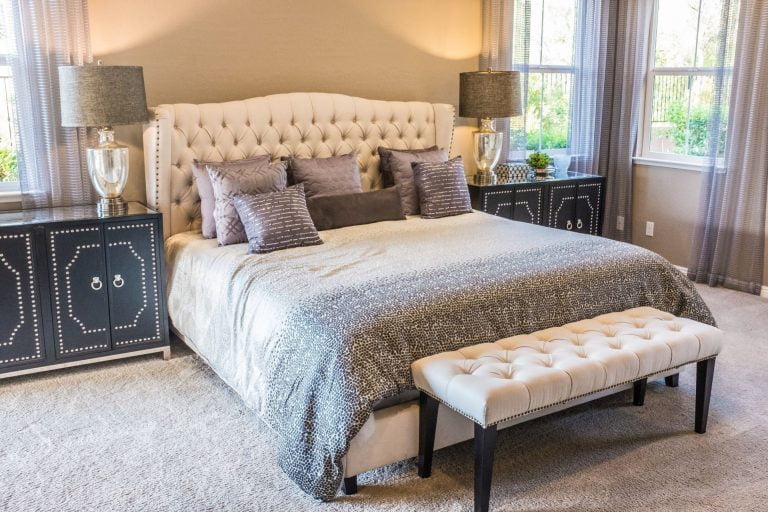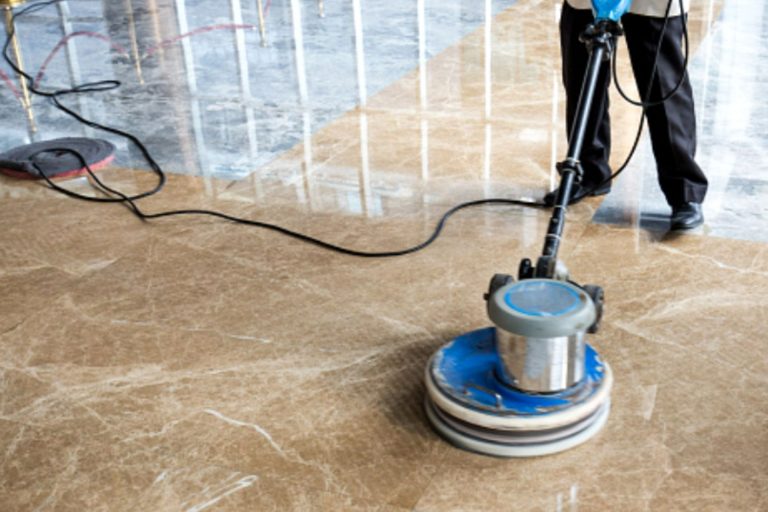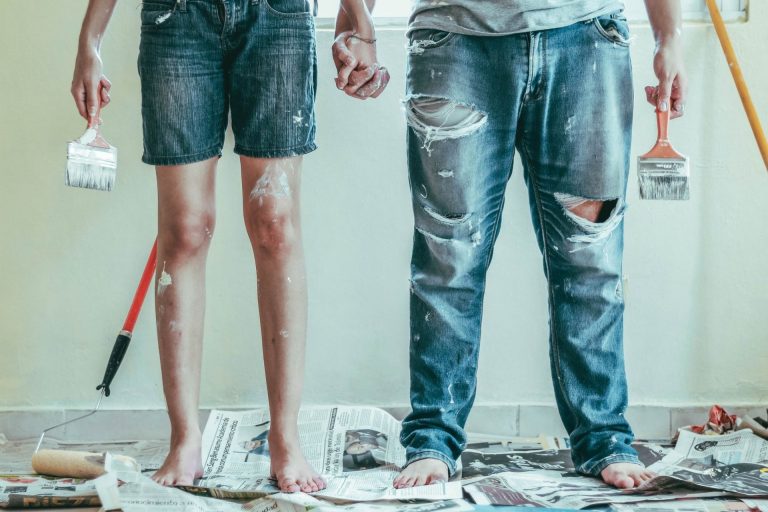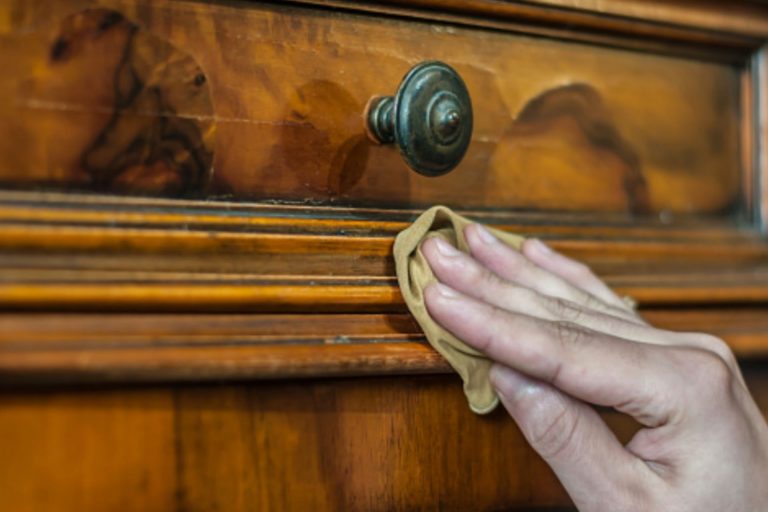The Ultimate Guide On How To Seal Laminate Flooring
Laminate floors are such a popular option for homeowners for obvious reasons. It comes with a list of benefits. For example, it is durable and cheaper. Not to mention the unique charm it adds to your place. It is also easier to care for than hardwood, which is a big pro. Besides that, laminate flooring is available in a variety of colors and wood effects. As you can understand, there are so many reasons why laminate flooring is popular among homeowners. However, most homeowners are not clear about one thing when it comes to laminate. It is whether or not laminate floors need sealing or how to seal laminate flooring properly.
As you know, it is compulsory with certain types of flooring. However, when it comes to laminate, things are not quite as clear. You may be wondering whether to seal the flooring or if it is something you should try out. Either way, our guide will provide all the answers.
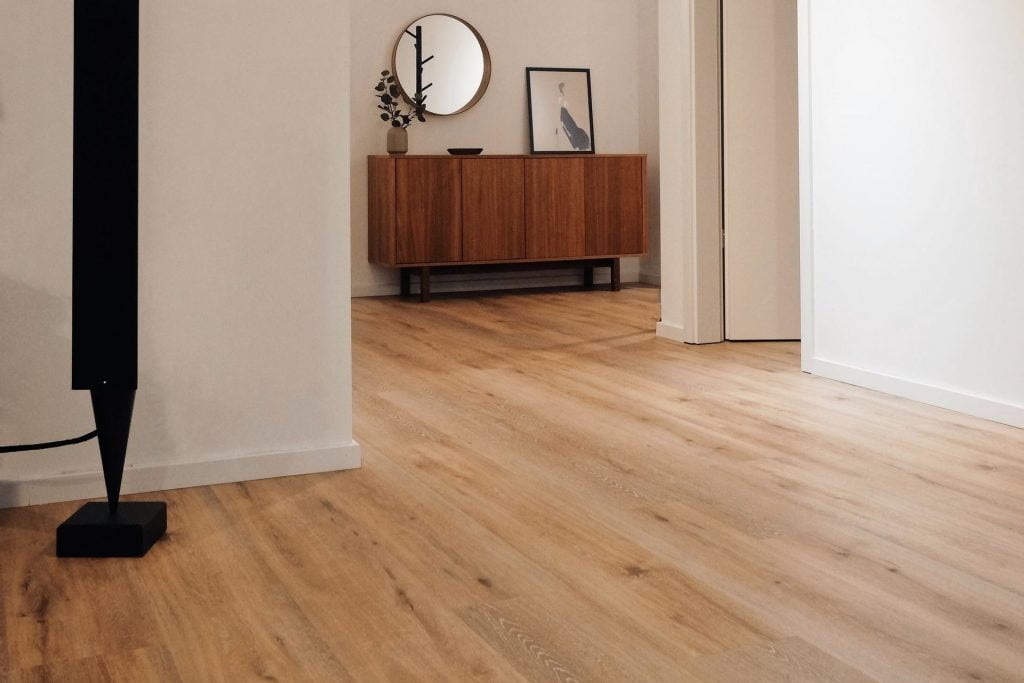
What to know before learning how to seal laminate flooring
Is Laminate Flooring Waterproof?
Now, you have to note that particular laminate floors are factory sealed for scratch resistance and waterproofing. In that case, sealing the surface usually is not necessary.
Most manufacturers recommend sealing the edges or joints of a laminate floor. You may have laminate flooring in your bathroom or laundry room. Those areas are particularly prone to get in contact with water the most. So, in this case, it is a good idea to seal those areas.
Some laminate flooring, however, is not waterproof. With a laminate without waterproof coatings, most surface spills can be quickly wiped up and not cause any damage. However, if spills somehow soak into the laminate joints, it can cause big problems.
Although many floors have moisture-protective cores and surfaces, it is not 100% waterproof. That makes it more prone to warping, rotting, and bending. So it is an excellent option to use a sealant to make it waterproof.
What are the benefits of waterproofing laminate floors?
Waterproofing your laminate floors helps it to last longer as well as keep its elegant look. The most notable benefit of waterproofing your laminate flooring is keeping it safe from water damage. It can significantly help the engineered materials which are particularly prone to water damage.
There is a lot of peace of mind putting laminate flooring in your kitchen or your dining room. That is because then you know that it is armored against water damage.

Another considerable benefit of waterproofing laminate flooring is providing a more secure and “locked-in” flooring solution.
You see, laminate floors are known for their ability to “float” in a way that traditional hardwood floors cannot. However, the downside is that it also opens them up to shifting and seams become wider.
The proper waterproofing solutions lock those laminate pieces in place while still allowing the entire floor to float simultaneously.
Finally, waterproof laminate flooring is a whole lot easier to clean and maintain. It will also always look brand-new! It will look fresh, a lot longer than laminate flooring without any protection.
All in all, sealing will extend the lifespan while providing extra protection against spills. Now do not worry; the sealing process is a lot easier than you think. It is something that every homeowner can tackle all on their own. You do not need to spend a ton of money on hiring professionals. Keep scrolling to find out what steps you need to take.
How To Seal Laminate Flooring
You may think sealing laminate is a complicated process. However, it is a relatively simple process. What you have to do is follow these simple instructions:
1st step: Prep the area
As you know, you always need to start with a clean canvas. So before you begin the sealing process, you have to clean the floor thoroughly.
Be sure to remove any dirt, dust, or grime by sweeping the area well. If any dust remains on the floor when you begin coating, it will get stuck underneath the coat.
After you sweep the floor, go in again using a mop. Cleaning with a damp mop will help get rid of any excess dirt you missed. Make sure the mop is wet but not completely soaked. That is because the floor must be dry before you start the coating process. If you use too much water when mopping, it could get underneath the planks. It will be hard to remove once you seal them and may require replacement.
2nd step : Remove Baseboards
Remove any baseboards or molding from the bottom of the walls along with the laminate.
Once the top coat dried, you have to put them back over the topcoat to get a tight seal. However, if you do not remove baseboards, you will not have the sealant all the way flush with the edge.
You can use a pry bar to detach the baseboards. Make sure to carefully pull out the finishing nails, holding them in place.
You have to be gentle here because they are going back into the same spots. Detach the finishing nails and replace them with new ones when you replace them.
Once you have removed the molding and baseboards, tape off the walls with painter’s tape. It will protect them from the sealant.

3rd step : Caulk the Expansion Gaps
You will notice that your laminate has small gaps between the planks and walls. Did you see them? Those are known as expansion gaps.
You see, a unique quality of laminate flooring is that it contracts and expands with the weather. When the weather gets hot, it gets more prominent. Likewise, when it gets cold, it gets back in.
However, if your laminate flooring does not have these gaps, it would crack or split when it expands.
Now, to waterproof and seal the gaps, fill them with silicone caulk. Pick a product that is of high quality. Silicone is waterproof. It will keep out moisture while letting the planks expand at the same time. Silicone is a malleable and flexible material that glues together. It is perfect to use to seal any gaps that serve as spaces for water to seep in. You can find a variety of silicone sealants available on the market. However, make sure to choose one specific to your floors.
Also, remember to let the caulk cure overnight. Once the caulk is ready, you can move on to the next step.
4th step : Apply Top Coat
At this stage, your entire floor is clean, and you have sealed any gaps too. Now it is time to add the topcoat.
You can use a clear urethane coat to seal the laminate floor. Before you do that, though, you should always check with the manufacturer first.
You can use rollers for the application process. Rollers will speed up the process. However, they make it challenging to get clean, precise strokes. If you want the best application, you can opt for a large brush instead.
After the first application, let it dry overnight. Make sure to have the room well ventilated and unoccupied. Once it has dried, you can then paint on the next coat.
Note that you will want two layers minimum to seal the flooring effectively. However, you can add a third layer for best results. Always remember to let each coat cure before adding a new one.
Once the sealant is applied and cured, you can remove the masking tape. Then replace the baseboards and molding.
How To Seal Laminate Flooring Seams
How to seal laminate flooring seams is an easy process. However, pay close attention to instructions to get everything right. Any missteps could lead to damage and a waste of sealant.
1st step : Prep the floor
The first thing you need to do is prep the floor. Remember that even specks of dust can affect the quality of the coating. Follow the steps we mentioned earlier and clean the area well. You know the drill; sweep, mop, and wipe everything squeaky clean.
Also, take everything you do not need out of the way. That way, you can have an easier time during the application.
After you finish cleaning, it would be an excellent time to put on some protective clothing. Remember that safety comes first. Some sealants include potent ingredients that can damage your regular clothes. They can even cause skin rashes if they get contaminated with your skin. So take safety measures; Put on gloves and long-sleeved clothes. Then, you are ready to prepare the solution.
2nd step : Prepare the Solution
First, you should check the label about how they recommend using the product. The instructions usually differ from one type or brand to another.
For instance, you may even have to mix two solutions or dilute one solution with water. Either way, having several containers around is a good idea. Make sure the containers are sizeable if you are sealing a large room.
Some other sealants, however, come ready to use. In that case, you only have to wait until the floor dries out. Then you can apply the solution.
3rd step : Applying the Sealant
Applying the sealant is not hard at all. You can use a mop or a towel to spread it on the laminate flooring.
Make sure to paint it on as evenly as possible. If the layer has thick
spots, you will notice a milky film-forming. You have to remove
those spots right away. Then you can reapply sealant over that spot.
In some cases, one layer of sealant is not enough. Remember to check the label regarding potency and interaction with various types of wood.
Apply several layers of sealant to your laminate flooring if the formula works for multiple coatings. Always remember that you should let the coat dry completely before applying another layer of coating.
Other than that, remember not to go overboard with your use of sealant. Too much product does not give you extra protection. Instead, it will change the way your flooring looks, altering its texture and color.
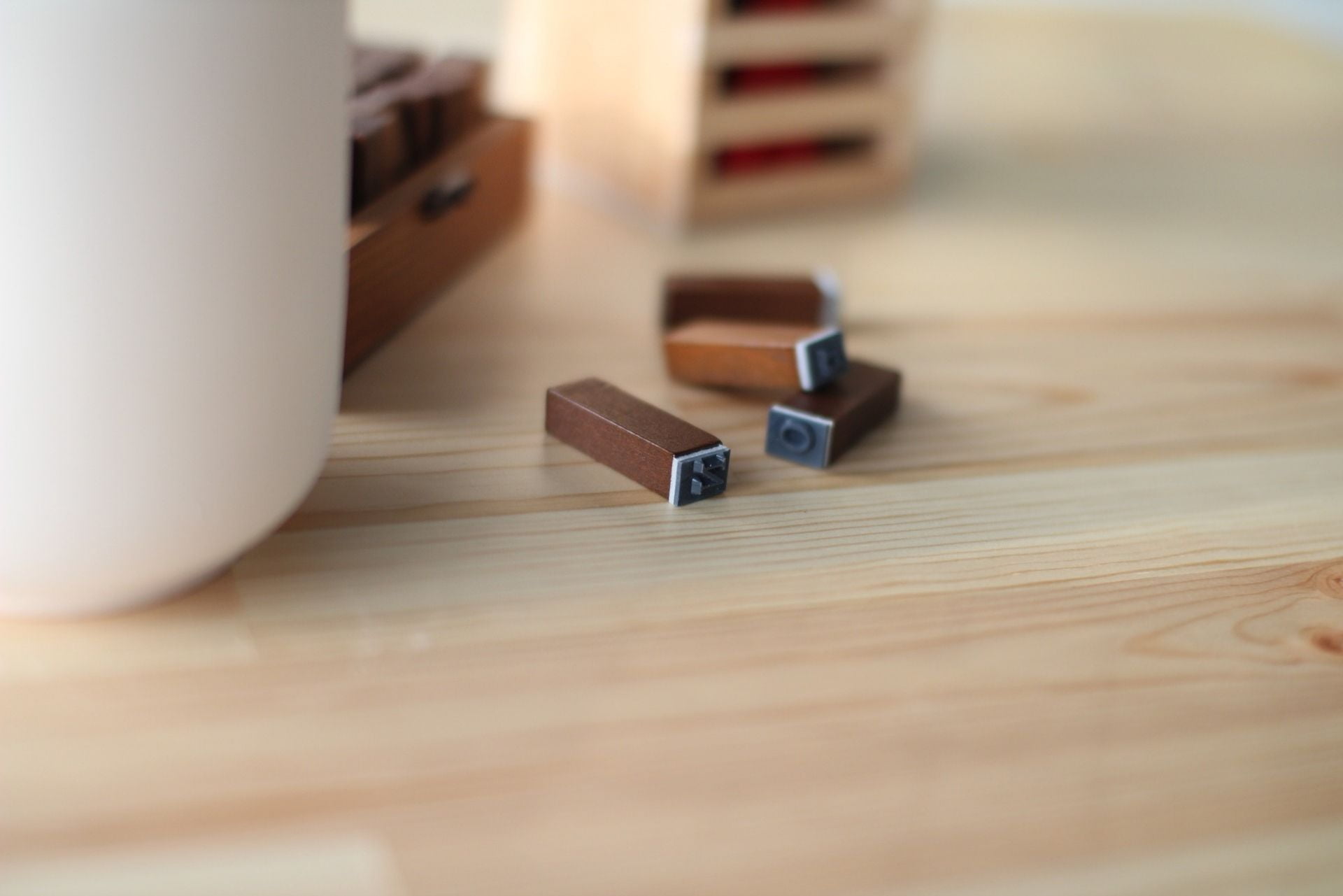
4th step : Drying
It is best if you let the sealant dry on its own. Do not try to rush it by using a heat source. Only do that if it is wet or if the sealant’s label instructs you to do so.
After the flooring is dried up, you may want to use a clean rag or a floor buffer. It can give your laminate flooring some much-needed shine. Remember to use more than two coats of sealant to get the best results.
You can even use the buffer between applications. However, it would make the whole process much longer. Usually, it is enough to use it after you finish sealing.
Other Ways To Waterproof Laminate Flooring
This makes household chores a lot easier to tackle but it also improves the value of your home. Laminate flooring that looks like it was put down yesterday but is really years old is a huge selling point!
Waterproofing your floors makes household chores a lot easier to tackle. Now let us learn a few other ways to waterproof your flooring.
Seal the Locking Mechanisms
Another way to improve the water resistance of laminate flooring is to seal the locking mechanisms using PVA Type II glue. Remember to purchase a bond that comes in a bottle that does not squeeze too much product out. That way, you do not have to deal with spots of dried adhesive.
Applying this kind of product also lets you seal the areas where the planks meet as you install them. This process will allow you to lift the floors easily, in case you need to do so. You can apply hydro-seal on locking mechanisms. You will be able to improve the waterproof ability of traditional laminate flooring by this process. So use a generous amount on the floor’s surface and side groves. It will help make your floor waterproof for a limited lifespan of up to a decade.
Buy Waterproof Flooring
Now, this idea may seem obvious. However, it is a helpful suggestion if you wonder which type of flooring you want to buy. It would be a wise choice to get waterproof flooring to avoid any mishaps. It would be especially beneficial for the floor for kitchens, bathrooms, or dining areas. That is because those areas get in contact with water the most. If you install waterproof flooring, you do have to deal with any problems with water damage. They are also affordable, and you do not have to worry about spending a lot of money.
The good news is that manufacturers try to come up with waterproofing solutions more and more. A lot of brands are looking for other ways to provide waterproof flooring. For example, they would change the formulation of the fiberboard. That kind of flooring is more scratch-resistant and is better at mimicking the look of wood and stone.
Can You Use Polyurethane For Laminate Floors?
It is debatable whether polyurethane is suitable for laminate or not. According to some reports, polyurethane can be toxic to laminate flooring. That is because laminate flooring has an aluminum oxide surface, and it should never tamper. Adding a sealant like polyurethane can end up causing more harm than good by voiding your warranty! So it is essential to read up on it and get expert opinions before applying.
However, if you decide to add polyurethane, it is essential to know some tips beforehand. First of all, polyurethane does not stick well to laminate floors. It does not adhere because of the resin coat on laminate flooring. You can use a mop and let it dry. Usually, polyurethane requires more than one coat to work. It would be best to repeat the process twice. However, since it depends on the flooring, it is best to follow the manufacturer’s suggestion.
What if you wish to make your laminate flooring more moisture-resistant? In that case, you can apply laminate flooring sealant to only the joints. However, do not extend to anywhere else on the flooring. Remember that you cannot glue laminate flooring to the subfloor. That is because it limits the floor’s ability to expand and contract properly. Do not forget to get rid of any excess glue as you install. You will be able to buy general wood glue at any home improvement store.
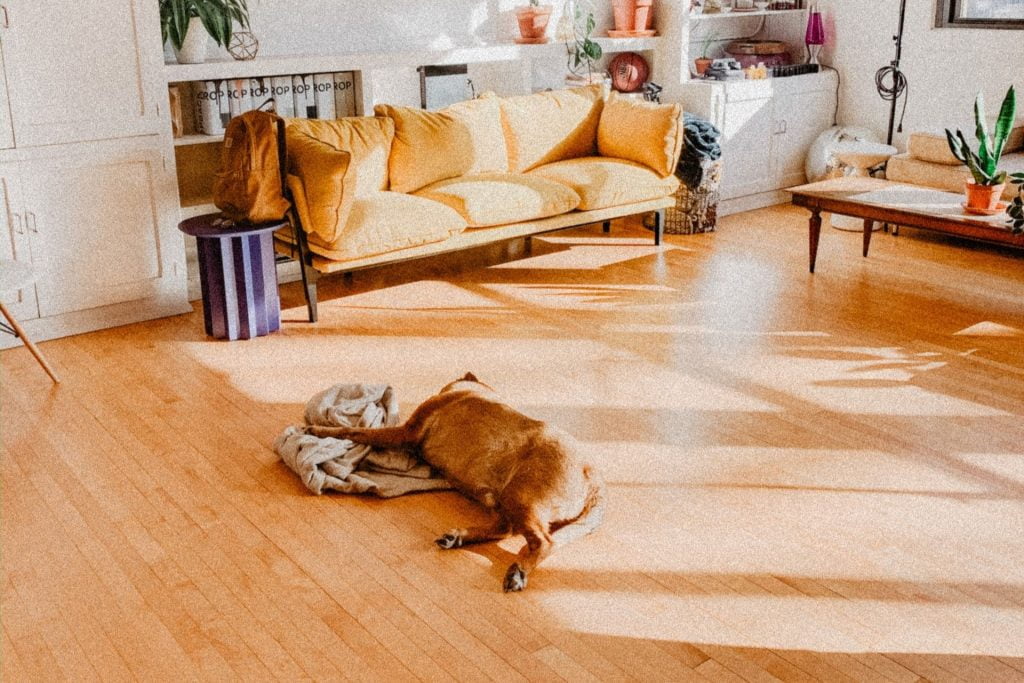
Tips when sealing laminate flooring
- Remember that not all laminate flooring will be able to hold onto a clear coat and adhere to it. Talk with the manufacturer of your laminate before you begin.
- If you cannot clear coat your laminate, you can still do things to protect it from water.
- You do not necessarily have to apply a topcoat to the whole floor to protect it. However, if your laminate can adhere to it, doing the entire thing will provide the best protection. Vinyl flooring is more long-lasting and also offers you more mobility than laminate floors. So if you want a 100% completely waterproof flooring option, go for vinyl floors.

